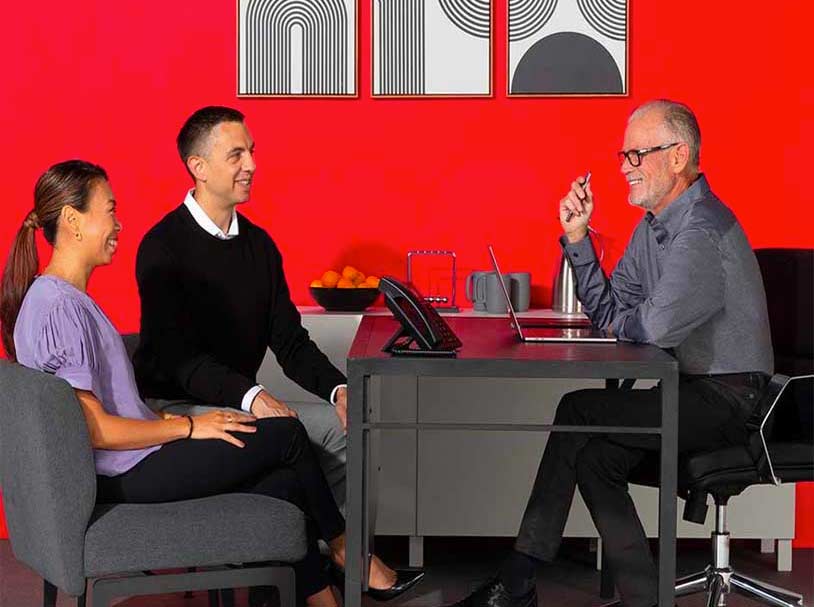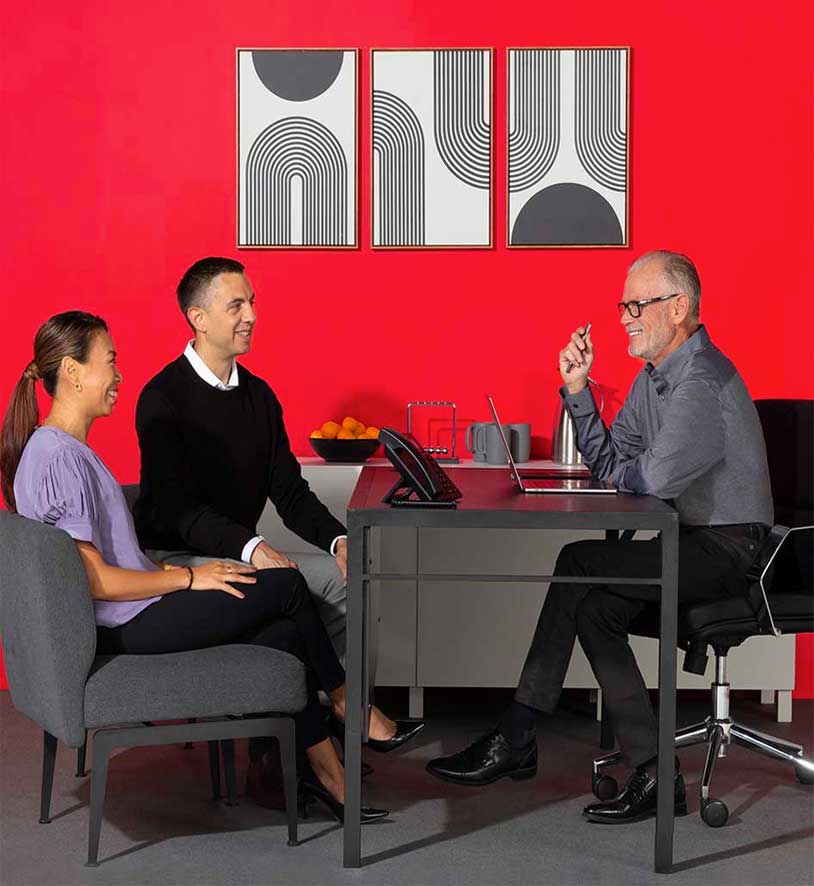How fax machines work and how to fax using VoIP

Once upon a time, just about every business office had a fax machine that looked a lot like a wide office phone with a feeding tray. You can probably spy a fax machine collecting dust in the corner of your local package shipping store.
But how does fax work, what are fax machines used for, when to use faxing, and are faxes becoming extinct? Read on for answers to these questions and more.
What is a fax machine?
Half a century ago, fax or facsimile machines were big and expensive—roughly $18,000 for a 100-pound piece of office equipment. But, they were the only way to send important documents quickly and securely from one location to another. Keep in mind that in 1970 “quick” meant about six minutes to send a one-page letter.
As fax machines improved, so did the transmission time. This was a boon to businesses that depended on sending or receiving sensitive documents. Fax machines became so popular that “fax” became a verb, as in “Fax me your order and we’ll ship it today.” The sales of stand-alone fax machines peaked in the U.S. in 1997 and three years later in Japan. Today, you can purchase a 25-pound business fax machine that is also a color copier for under $350.
How does a fax machine work?
Imagine, back in the day, a food manufacturer in Albany, New York, needed to send a recall notice to a grocer in Sacramento, California. Someone in the Albany manufacturer’s office would feed the notice into their fax machine and punch in the phone number of the Sacramento grocer’s fax machine. (Yes, fax machines have their own phone numbers and if you accidentally dialed a fax number you would know by the awful screech.)
The Albany fax machine would scan the notice and convert the image into electrical signals that traveled across analog telephone lines to the Sacramento fax machine. Those signals would be decoded to re-form an image of the notice, which was then printed by the receiving fax machine. Depending on the quality of the fax machines involved, the document arriving in Sacramento would look similar to the Albany original. Well, maybe not entirely similar, but there was a good chance it was legible.
Fax broadcasting software evolved to make it possible to send faxes to not just one recipient, but thousands of recipients simultaneously. As you can imagine, important business documents got lost among the scores of unsolicited advertisements that choked fax machines. So in 2005, the U.S. government passed the Junk Fax Prevention Act to prevent fax technology abuse. That congressional act alone probably saved a forest of trees.
What are fax machines used for?
Over the decades, fax machines have been used for many purposes. Think about a doctor sending a prescription to a pharmacy on behalf of a patient who lost his luggage while traveling, a real estate agent in Florida requesting signatures from buyers in Michigan, or a government agency verifying service dates for a soldier seeking employment. Way before DoorDash and Grubhub, some restaurants would let you fax them your order so it would be ready to pick up when you arrived.
Are fax machines going extinct?
No, they haven’t gone the way of the dinosaur just yet. In fact, you can still buy a fax machine at most office supply stores. But why on earth would you want to when there are digital options available?
Why do some businesses continue to use traditional fax machines?
Contrary to popular belief, not all businesses clinging to their fax machines are simply afraid of change. Here are some valid reasons why faxing remains popular in certain industries:
- According to statista.com, only 62 percent of U.S. hospitals in 2021 were able to electronically send, receive, find and integrate health information with outside systems. This meant they needed alternative ways to send health records and faxes filled that void.
- Law enforcement and other government agencies may need to quickly share information from paper records that have never been digitized.
- Some retail businesses may have their fax numbers printed on old business cards, signage, stickers and invoices and are concerned they may miss an order from an old customer.
Where can I fax something?
If your businesses doesn’t have a fax machine, here are some options:
- a public library
- the post office
- commercial copy centers and shipping offices
- business centers at your hotel or the airport
- office supply stores
- banks or credit unions
- online through a digital faxing service
- a VoIP business phone desktop or mobile app
To avoid disappointments, check to find out faxing costs, size limitations and whether or not service is open to the general public or requires membership.
Do you need a fax machine to receive a fax?
Years ago, you had to have a fax machine to receive a fax, but not anymore. Today’s technology makes it possible to receive a fax as a digital document. A digital fax is the same as an eFax, online fax, internet faxing and virtual fax. You’ll need a dedicated fax app, an email account that supports digital faxing, or a VoIP business phone plan like Ooma Office that offers virtual faxing.
Why send a digital fax instead of attaching a document to an email?
The bottom line is security. Most online faxes are encrypted, making them more secure than emails, which can be much easier for hackers to break into.
For example, when the Ooma Office HIPAA mode is enabled, fax data is encrypted in transit (when transmitted from one party to another) and at rest (when stored by Ooma).

The beauty of a digital fax is that it doesn’t require the extra expense of special fax paper or toner. And digital fax transmissions are regarded as being just as secure as faxes sent over a fax machine. Arguably more secure since they aren’t waiting for someone to physically pick them up from a machine.
To learn more about digital faxing, watch this Ooma video: How to fax with VoIP on YouTube.
How do you fax?
Faxing remains an important way for businesses to send data and receive sensitive data. As mentioned, there is more than one way to send a fax. You can:
- fax with a traditional fax machine
- have a third-party send documents for you
- use an online fax service
- use a digital faxing app like the one available in Ooma Office
Thinking about moving from a traditional phone service to an internet phone system, but you have an old fax machine you can’t bear to get rid of? No worries. You can still operate a traditional fax machine on an internet phone system by using an adapter. Or bypass the dedicated machine and fax using internet. With Ooma Office, the choice is up to you.

Learn more about how Ooma Office can help your business.
Thank you!
An Ooma Office Sales Representative will be in touch shortly.
866-573-0707


Learn more about how Ooma Office can help your business.
Just call 877-621-0515 or click this to CHAT. Or, fill out this form and someone will reach out to you shortly.



